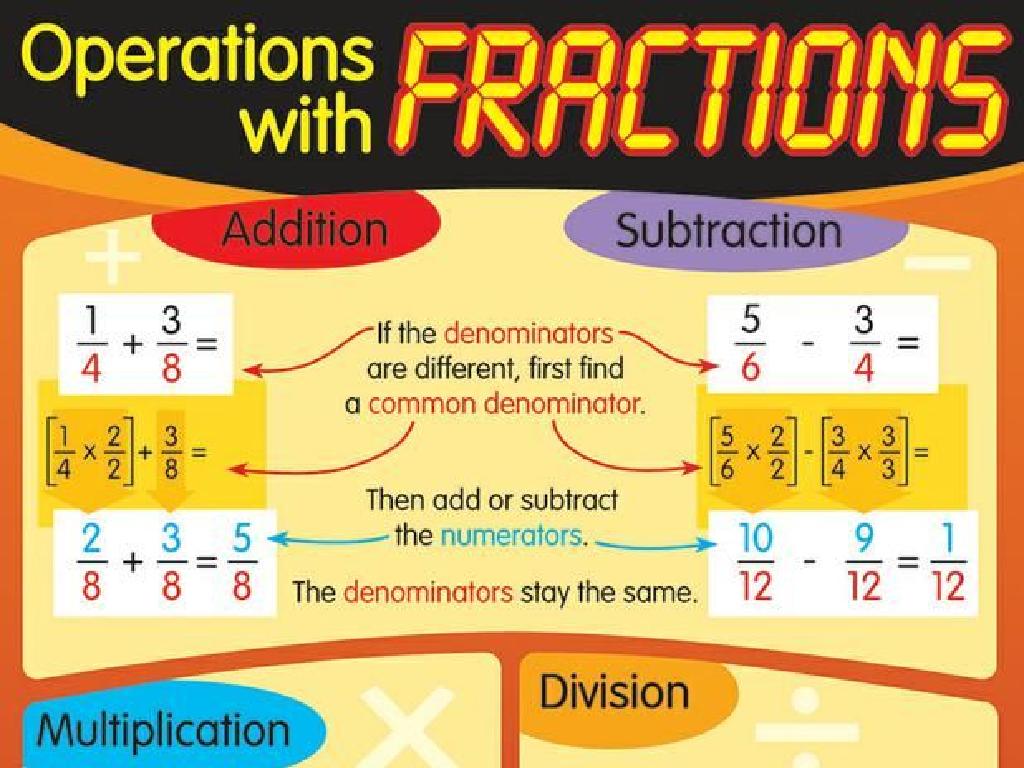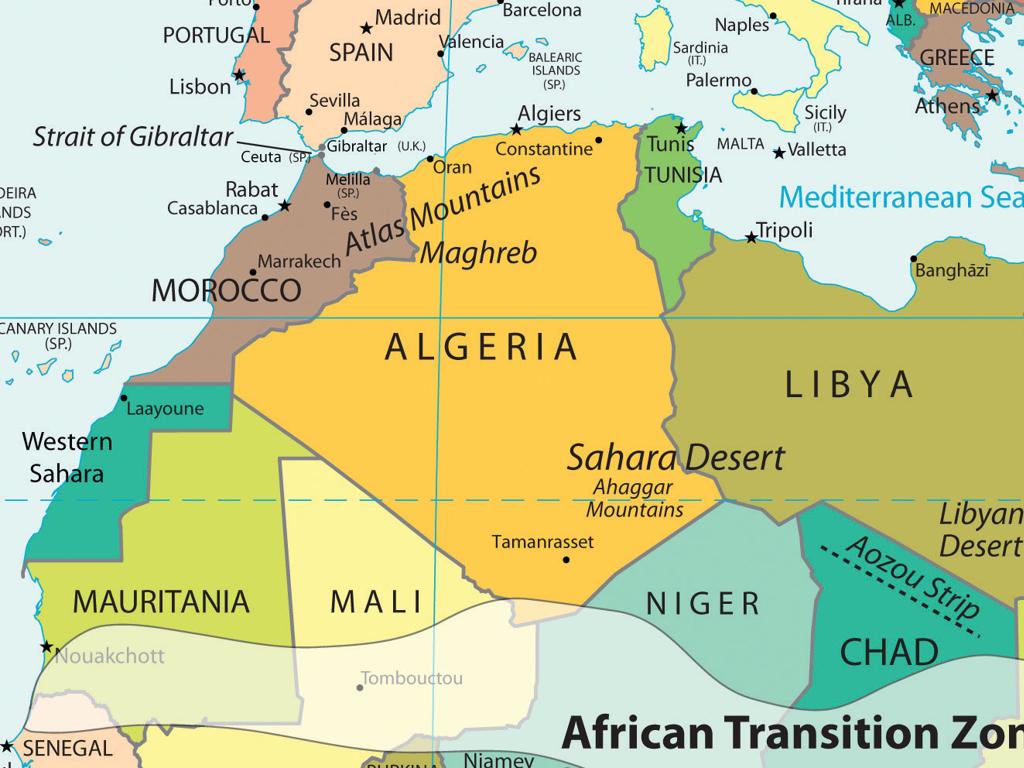Sale Prices: Find The Original Price
Subject: Math
Grade: Eighth grade
Topic: Consumer Math
Please LOG IN to download the presentation. Access is available to registered users only.
View More Content
Finding the Original Price
– Understanding sales and discounts
– A sale price is the reduced cost of an item, discount is the amount saved
– Math’s role in daily shopping
– Use percentages and subtraction to navigate discounts while shopping
– Calculating original prices
– To find the original price, divide the sale price by (1 – discount rate)
– Real-world application
– Practice by calculating the original price of items you buy
|
This slide introduces students to the concept of sales and discounts in the context of consumer math. It emphasizes the importance of understanding how to calculate the original price of an item when given the sale price and the discount rate. This is a valuable skill for everyday shopping, helping students to become savvy consumers. The slide encourages students to apply this knowledge to real-world scenarios, such as determining how much money is saved during sales. Teachers should provide examples and guide students through the process of finding the original price, ensuring they understand the mathematical concepts involved.
Understanding Sale Prices
– Define Sale Price
– The reduced price of an item on promotion
– Examples of Sale Prices
– ‘50% off’ tags in stores, Black Friday deals
– Relationship: Original, Discount, Sale
– Sale Price = Original Price – Discount
– Calculating Original Price
|
This slide introduces the concept of sale price, which is a fundamental topic in consumer math. Begin by defining sale price as the reduced cost of an item during a promotion or clearance. Provide relatable examples that students might see in stores, such as ‘50% off’ tags or special event sales like Black Friday. Explain the relationship between the original price, the discount given, and the resulting sale price, emphasizing that the sale price is calculated by subtracting the discount from the original price. To engage students further, demonstrate how to reverse the process to find the original price if the sale price and discount percentage are known, which is a common real-world skill. Encourage students to think of times they’ve seen items on sale and how the discount was presented.
Calculating Discounts
– Calculating discounts from original price
– Subtract the discount amount from the original price to find the sale price.
– Understanding the role of percentage
– Percentage represents the discount rate applied to the original price.
– Practice problem: 20% off on $50
– What is the sale price after applying a 20% discount to a $50 item?
– Steps to find the original price
– Divide the sale price by (1 – discount rate) to find the original price.
|
This slide introduces students to the concept of calculating discounts, an essential skill in consumer math. Begin by explaining how to find the amount of discount by multiplying the original price by the discount rate. Emphasize the importance of understanding percentages as they directly relate to the discount calculation. Work through the practice problem by calculating 20% of $50 to find the discount amount, then subtract it from the original price to find the sale price. Finally, demonstrate how to reverse the process to find the original price from the sale price, which is a skill they will often use in real-life shopping scenarios. Provide additional practice problems with varying percentages and original prices to solidify their understanding.
Finding the Original Price
– Understand the original price formula
– Original Price = Sale Price / (1 – Discount Rate)
– Learn why original price matters
– Knowing the original price helps determine the true value of a discount.
– Example: $40 item at 20% discount
– What was the price before a 20% discount made it $40?
– Calculate the original price
– Use the formula to find the price before discount.
|
This slide introduces the concept of finding the original price of an item before a discount is applied. The formula for calculating the original price is an essential tool for consumer math, allowing students to understand the real savings during sales. It’s crucial for students to grasp why it’s beneficial to know the original price, as it can influence purchasing decisions and budgeting. The example provided uses a common scenario of a 20% discount, which will help students apply the formula in a practical context. Encourage students to practice with different percentages and sale prices to become comfortable with the concept.
Calculating Original Prices
– Problem 1: $72 coat at 40% off
– Find the original price before the 40% discount.
– Problem 2: $45 item at 25% discount
– Calculate the original price with a 25% discount.
– Problem 3: $35 shirt at 30% off
– Determine what the shirt cost before the 30% discount.
– Understanding discount calculations
|
This slide presents practice problems for students to apply their knowledge of percentages and discounts to find the original prices of items. For each problem, students should set up an equation representing the sale price as a result of applying the discount to the original price. For example, in Problem 1, if the original price is P, then 72 = P – 0.40P. Solving for P gives the original price. Encourage students to use similar steps for each problem and verify their answers. This exercise will help solidify their understanding of how discounts affect pricing and prepare them for real-world shopping scenarios.
Role-Play Shopping: Finding Original Prices
– Pair up: shopper and cashier roles
– Use mock items with sale tags
– Calculate original prices together
– If an item is $30 after a 25% discount, what was the original price?
– Discuss the value of knowing original prices
– Understanding discounts and original prices can lead to smarter shopping choices.
|
This class activity is designed to provide students with practical experience in calculating original prices from sale prices. By role-playing as shoppers and cashiers, students will engage with the concept of discounts and how they affect the original price of an item. Provide a variety of mock items with different sale percentages to challenge students. Encourage them to use the formula: original price = sale price / (1 – discount rate). After the activity, facilitate a discussion on the importance of knowing the original price to assess the value of a discount and make informed purchasing decisions. Possible variations of the activity could include different discount rates, multiple items for cumulative discounts, or even comparing discounts from different stores.
Wrapping Up: Sales and Original Prices
– Recap of sale price concepts
– Significance in everyday math
– Grasping sales helps with smart buying decisions
– Homework: Real-world price calculation
– Choose an item, note sale price and discount, find original price
– Be prepared to discuss your findings
– Share how you determined the original price and its importance
|
As we conclude today’s lesson on sale prices and finding the original price, it’s crucial for students to understand the practical applications of these concepts in consumer math. The ability to calculate discounts and original prices empowers students to make informed purchasing decisions. For homework, students will engage with real-world scenarios by selecting an item online, noting its sale price and the discount percentage, and then using the formula (Sale Price = Original Price – (Original Price * Discount Rate)) to work backwards and find the original price. This exercise will reinforce their understanding and prepare them to share their process and the importance of the skill in the next class.





